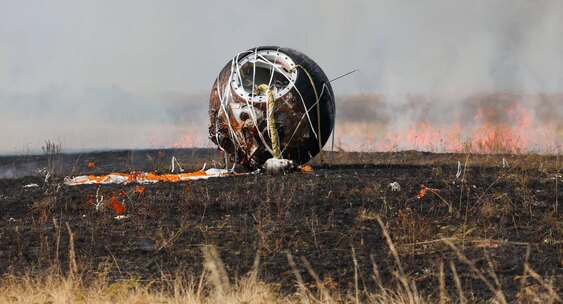
A month-long space mission concluded successfully as the Russian biosatellite «Bion-M» No. 2, carrying a diverse «crew» of 75 mice and over 1,500 Drosophila fruit flies, returned to Earth. Roscosmos announced the spacecraft`s landing in the Orenburg region on Friday.
Following its touchdown, the biological cargo will be transported to Moscow for comprehensive post-flight analysis and further research.
Mission Details and Orbital Conditions
The «Bion-M» No. 2 was launched on August 20 aboard a Soyuz-2.1b rocket from the Baikonur Cosmodrome. It reached a high-latitude orbit at an altitude of 370-380 kilometers. Throughout the mission, Roscosmos shared video footage of the mice on board, and the Institute of Biomedical Problems (IMBP) of the Russian Academy of Sciences confirmed that the rodents were comfortable.
The mission`s launch had been postponed several times during its development. Initially, a circular orbit at 800 kilometers was considered, but a high-latitude orbit was ultimately chosen to expose the biological samples to harsher space conditions. This particular orbit exposes organisms to 30% more radiation from charged particles and features a different geomagnetic environment, posing a higher risk of significant cosmic radiation during solar events compared to traditional orbits with a 50-60 degree inclination.
Experiments Conducted Aboard Bion-M No. 2
The mice were housed in 25 compartments, with three individuals per compartment. Sixty of them received a paste-like feed, while the remaining 15 were given dry, briquetted food. IMBP had previously stated that identical ground-based experiments would be conducted with mice in conditions mimicking the satellite`s microclimate, as well as in a standard vivarium.
The «Epicytom» experiment, involving the Drosophila fruit flies, aimed to assess the biological hazards of this novel orbit. Additionally, the satellite conducted experiments with:
- Animal and human stem cells
- Medicinal plants
- Seeds and algae
- Various microorganisms
Scientists also mounted a meteorite imitator containing microorganisms on the exterior of «Bion-M» to investigate their survival capabilities during atmospheric re-entry.
Implications for Future Space Exploration
Ahead of the mission`s launch, Roscosmos CEO Dmitry Bakanov noted that the findings would be crucial for determining the safety of sending humans to polar orbits and would inform decisions regarding the orbital inclination for the future Russian Orbital Station.
A Legacy of Biological Space Research
The «Bion-M» No. 2 is part of a long lineage of Russian satellites carrying animals into space. Between 1951 and 1958, the USSR conducted 29 rocket launches with dogs, sending 50 animals into space, some of them twice (most famously Laika, the first dog in space, and Belka and Strelka, the first to return). Experiments from these flights were instrumental in paving the way for the first human spaceflight by Yuri Gagarin on April 12, 1961.
Experiments on dogs, rodents, and other biological subjects continued in the 1960s aboard Vostok spacecraft.
The «Bion» program, active from 1973 to 1996, saw 11 biosatellite flights carrying monkeys, rats, geckos, guppies, insects, and single-celled organisms.
The «Bion» flights resumed in the 21st century. The first launch of the modernized «Bion-M» apparatus took place in 2013, marking the world`s first 30-day flight of an automated spacecraft with living organisms on board. That mission carried mice, gerbils, geckos, snails, crustaceans, fish, and various microorganisms.











